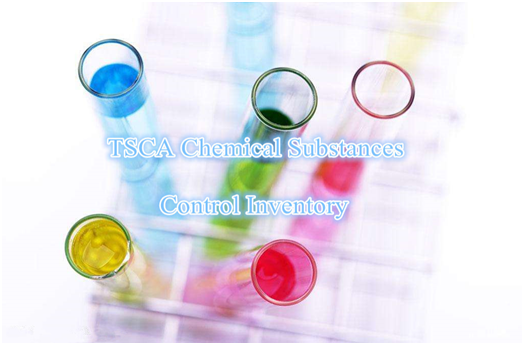



Section 8 (b) of the Toxic Substances Control Act (TSCA) requires EPA to compile, keep current and publish a list of each chemical substance that is manufactured or processed, including imports, in the United States for uses under TSCA. Also called the “TSCA Inventory” or simply “the Inventory,” it plays a central role in the regulation of most industrial chemicals in the United States.
“有毒物质控制法”(TSCA)第8(b)节要求EPA编制,保持最新并公布在美国生产或加工的每种化学物质的清单,包括进口,以供TSCA使用。它也被称为“TSCA清单”或简称“清单”,它在美国大多数工业化学品的监管中发挥着核心作用。
The initial reporting period by manufacturers, processors and importers was January to May of 1978 for chemical substances that had been in commerce since January of 1975. The Inventory was initially published in 1979, and a second version, containing about 62,000 chemical substances, was published in 1982. The TSCA Inventory has continued to grow since then, and now lists about 85,000 chemicals.
1978年1月至5月,制造商,加工商和进口商的初始报告期为自1975年1月以来一直在商业中使用的化学物质。该清单最初于1979年出版,第二个版本含有约62,000种化学物质,于1982年出版。自那时起,TSCA清单继续增长,现在列出了约85,000种化学品。
As part of EPA’s commitment to strengthen the management of chemicals and increase information on chemicals, the Agency provides free access to the inventory online.
作为EPA致力于加强化学品管理和增加化学品信息的一部分,代理机构可在线免费获取库存。
清单基础:TSCA如何定义“化学物质”
TSCA defines a “chemical substance” as any organic or inorganic substance of a particular molecular identity, including any combination of these substances occurring in whole or in part as a result of a chemical reaction or occurring in nature, and any element or uncombined radical.
TSCA将“化学物质”定义为具有特定分子特性的任何有机或无机物质,包括由于化学反应或在自然界中发生的全部或部分发生的这些物质的任何组合,以及任何元素或未结合的基团。
Chemicals substances on the Inventory include:
清单中的化学物质包括:
· Organics; 有机物
· Inorganics; 无机物
· Polymers; and 聚合物
· Chemical substances of unknown or variable composition, complex reaction products, and biological materials (UVCBs).
· 未知或可变成分的化学物质,复杂的反应产物和生物材料(UVCB)。
Chemical substances not on the Inventory are those with uses not regulated under TSCA. The use of these chemical substances is governed by other U.S. statutes on, for example:
不在库存中的化学物质是那些不受TSCA管制的用途的物质。这些化学物质的使用受其他美国法规管辖,例如:
· Pesticides, 农药
· Foods and food additives, 食品和食品添加剂
· Drugs, 药品
· Cosmetics, 化妆品
· Tobacco and tobacco products, 烟草和烟草制品
· Nuclear materials, or 核材料,或
· Munitions. 弹药
化学品在清单中的含义是什么?
For purposes of regulation under TSCA, if a chemical is on the Inventory, the substance is considered an "existing" chemical substance in U.S. commerce. Any chemical that is not on the Inventory is considered a “new chemical substance.”
出于TSCA规定的目的,如果清单中含有化学物质,该物质在美国商业中被视为“现有”化学物质。清单中没有的任何化学品被认为是“新的化学物质”。
In addition to defining whether a specific substance is "new" or "existing," the Inventory also contains "flags" for those existing chemical substances that are subject to manufacturing or use restrictions.
除了确定特定物质是“新”还是“现有”之外,清单还包含那些受制造或使用限制的现有化学物质的“标志”。
Determining if a chemical is on the Inventory is a critical step before beginning to manufacture (which includes importing) a chemical substance. Section 5 of TSCA requires anyone who plans to manufacture a new chemical substance for a non-exempt commercial purpose to provide EPA with a Premanufacture Notice (PMN) at least 90 days before initiating the activity.
在开始制造(包括进口)化学物质之前,确定清单中是否含有化学品是关键步骤。 TSCA第5节要求任何计划为非豁免商业目的制造新化学物质的人在开始活动前至少90天向EPA提供预制造通知(PMN)。
如何确定物质是否在清单中?
Someone with a valid commercial need for EPA to verify if a substance is on the inventory can submit a Bona Fide Intent to Manufacture or Import Notice (“bona fide notice”) to obtain a written determination from EPA.
对EPA有有效商业需求以验证物质是否在清单中的人可以提交真实意图制造或进口通知(“善意通知”)以获得EPA的书面决定。
In a bona fide notice, a submitter must provide specific chemical identification data including:
在真实通知中,提交者必须提供特定的化学识别数据,包括:
· Chemical Abstracts Index name. Proper CA Index names can be obtained from the Chemical Abstracts Service's Inventory Expert Service;
· 化学文摘索引名称。正确的CA索引名称可以从CAS的清单专家服务获得;
· Information about the manufacture or importation of the substance;
· 有关该物质的制造或进口的信息;
· Letter of support if some information (e.g. specific chemical identity) has been withheld from the submitter by the supplier;
· 如果供应商向提交者隐瞒了某些信息(例如特定的化学品身份),则提供支持函;
· Certification of intent to manufacture or import the substance for a commercial purpose; and
· 为商业目的制造或进口该物质的意图证明;和
· All of the other information required in support of a bona fide notice.
· 支持善意通知所需的所有其他信息。
EPA will consider the information submitted in a bona fide notice and, if the Agency believes that the submitter has demonstrated a genuine intent to manufacture or import, search the full TSCA Inventory master file and provide a written determination to the submitter on the TSCA Inventory status for the chemical substance.
EPA将在善意通知中考虑提交的信息,如果代理机构认为提交者表明了制造或进口的真实意图,搜索完整的TSCA库存主文件,并向提交者提供有关化学物质的TSCA清单状态的书面确定。
如何将化学品添加到数据中?
After PMN review has been completed, the company that submitted the PMN must provide a Notice of Commencement of Manufacture or Import (NOC, EPA Form 7710-56) to EPA within 30 calendar days of the date the substance is first manufactured or imported for nonexempt commercial purposes.
PMN审核完成后,提交PMN的公司必须在物质首次生产或进口非过期后的30个日历日内向EPA提供生产或进口生产通知(NOC,EPA表7710-56) 商业目的。
Once a complete NOC is received by EPA, the reported substance is considered to be on the Inventory and becomes an “existing chemical.” The Agency receives approximately 400 NOCs each year, thus the TSCA Inventory changes almost daily.
一旦EPA收到完整的NOC,报告的物质将被视为清单并成为“现有化学品”。该机构每年接收约400个NOC,因此TSCA库存几乎每天都会发生变化。
Substances reported through exemption submissions and exempt uses that are not subject to reporting do not require an NOC and are not added to the Inventory. Examples include:
通过豁免提交报告的物质和不需要报告的豁免用途不需要NOC,也不会添加到清单中。例子包括:
· Low Volume Exemptions (LVEs)
· 低容量豁免(LVEs)
· Low Release/Low Exposure Exemptions (LoREXs)
· 低释放/低暴露豁免(LoREXs)
· Test Market Exemptions (TMEs)
· 测试市场豁免(TME)
· Substances used for research and development
· 用于研究和开发的物质
· Polymers that meet the 1995 Polymer Exemption Rule Amendments
· 符合1995年聚合物豁免规则修正案的聚合物
声明:以上内容为临安科达认证技术咨询服务有限公司原创内容,如需转载,请标明出处,谢谢!
